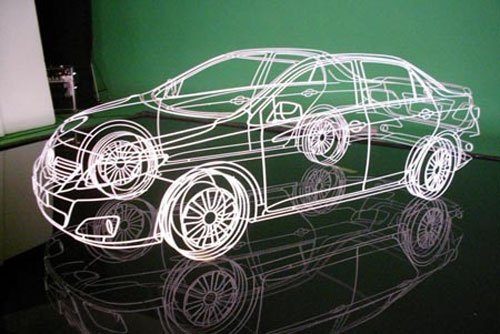#editorial
GM's IPO: Faster, Harder And Less Satisfying
Despite having more cash than debt for the first time in decades, GM is going back to Wall Street in search of fresh debt. Over the weekend, The General has been in talks with several banks to secure a $5b revolving line of credit to shore up its liquidity position ahead of an IPO that’s rumored to take place in August. At $5b, GM’s desired line of credit would essentially replace the $5.8b the automaker has repaid to the Treasury, and will help it deal with a number of pressing cash needs to maintain its shaky global empire. But with so many pressing uses for the cash, and political pressure mounting for a rapid IPO, can GM deal with its issues and take on more debt and be worth what the government wants it to be worth? Troublingly, the answers to these questions are not to be found on GM’s balance sheet.
Between the Lines: Wither The V8?
As we all know, those oblivious to history are bound to repeat its mistakes. Longtime readers also know I’ve gone down this road before, but the powers of my Twitter news feed shoved extra grist into this particular mill. Behold: Alain Raymond’s blog about the death of the V8 engine. Raymond’s weakest argument revolves around one fact: V8’s did lose mainstream appeal shortly after the demise of the Butterfly Collar. But Alain wishes to beat this dead horse for some misguided reason.
Editorial: The Truth About GM's IPO
One might believe that GM’s forthcoming IPO marks the second coming of Christ. GM, once the world’s largest corporation, faced oblivion in the winter of 2009. The train wreck of this former company reemerged from burial last summer through the generosity of the US and Canadian taxpayer as a new company shorn of most of its former financial liabilities, unproductive assets, and brands it no longer could support. Everything that Jerry York (R.I.P.) told the automotive world in January 2006 that GM needed to do to survive back then finally came to pass. And now, it’s preparing an IPO to swap ownership from the governments to the public. Ed Whitacre and his team will get the credit for a most remarkable turnaround while Obama will bask in the light of his stewardship of public monies. Let’s get the story straight.
Too Good To Be True: How Toyota's Success Caused Killer Decontenting
The ongoing kerfluffle over Toyota’s recall of over 2m vehicles for a gas pedal defect which (allegedly) caused unintended acceleration has caught much of the automotive media flat-footed. How could it be, many have wondered, that the automaker most associated in the US market with the concept of quality has slipped so badly? As TTAC’s Steve Lang recently discussed, Toyota has been on a decontenting binge since the mid-to-late-1990s, putting profit above the quality obsession that had defined its operations up to that point. As a result, the current generation of decontented Toyotas and accompanying quality issues and recalls can be seen as the culmination of a long-term trend. But why did that transition take place? Though it’s easy to blame greed and mismanagement for the decline in Toyota’s quality, the decline in standards was actually a natural progression of Toyota’s constantly-evolving, efficiency-obsessed production system.
Better Place Birthwatch: New $350m Investment Brings Deeper Pockets, But Not Broader Appeal
It goes without saying that it’s always good news for a business to be able to raise hundreds of millions of dollars on the financial markets. Just as important as the financial boost, such capital-raising also raises the profile of the company, presenting it as a viable investment and implicitly endorsing its underlying business plan. In the case of Project Better Place’s recent $350m funding boost however, the benefits might be largely limited to the firm’s balance book. Heavy participation by HSBC, Lazard and Morgan Stanley do help raise Better Place’s profile, but HSBC and Lazard are the only new investors in this most recent round of financing: Morgan Stanley, IsraelCorp, VantagePoint and other previous investors make up the rest of the round. This speaks to a fundamental challenge underlining Project Better Place: broadening, rather than deepening its appeal and support.




















Recent Comments